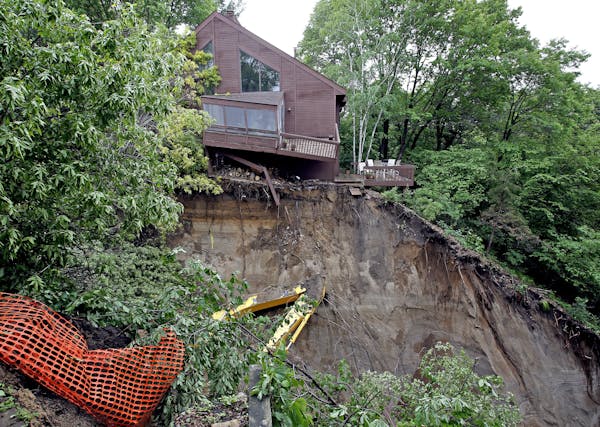One month after widespread floods soaked Minnesota, sandbags are still piled high from Waterville to Rainy Lake as communities begin the slow, costly work of rebuilding.
Damage assessment teams are crisscrossing the state, trying to gauge which storm-battered communities suffered enough losses to qualify for federal disaster assistance. But it's hard to tally the cost of a disaster when in some counties, the disaster is still happening.
In Wadena, 4 more inches of rain fell on the waterlogged community over the weekend, backing up sewers and sending residents scrambling for sandbags. Up North, the floodwaters are still high in Roseau, Lake of the Woods and Koochiching counties.
"That's what makes it a unique disaster," said Joe Kelly, Minnesota's deputy director of Homeland Security and Emergency Management. "It's across our whole state, and the communities and counties are all in different stages of recovery."
In some counties, the question isn't whether they qualified as a disaster zone, but how big the cleanup bill would be.
Flash floods in southwestern Minnesota's Rock County washed out roads, bridges and railroad tracks and damaged a power plant. The dam at Blue Mounds State Park failed.
The floodwaters damaged so many acres of farmland that the U.S. Department of Agriculture designated the county a natural disaster area on Tuesday.
The floods that began June 11 caused damage in at least 51 of Minnesota's 87 counties. On July 9, Gov. Mark Dayton asked the Obama administration for a formal disaster declaration.
To qualify for federal assistance, the state needs to demonstrate that it has suffered at least $7.3 million in damage. In his letter to the Federal Emergency Management Agency, Dayton said a preliminary assessment of just eight counties had tallied $10.8 million in damages.
Emergency assessment teams have visited more than two dozen counties already. Teams will be in Yellow Medicine, Washington, McLeod and Waseca counties today, and Le Sueur and Lac qui Parle counties and the Prairie Island Indian Community on Friday.
More assessments are expected to be scheduled next week.
Raking out the muck
Many communities aren't waiting for the federal ruling.
A month ago, Waterville residents were frantically sandbagging against rising water from two neighboring lakes that would eventually swamp 20 percent of the town.
The city has put out a call for volunteers to help remove the sandbags this weekend and help neighbors rake the debris and lake muck out of their yards.
"This will be a summer that will live in our memories for a long, long time," said Waterville Mayor Stephen Mihalik, whose community is still tallying damage that is likely to run into the millions of dollars. "Ultimately, we were lucky. Nobody got hurt or killed. We just have to recover and come back stronger than we were before."
Waterville is a resort town, and the floods hit just as the summer tourist season should have been ramping up.
Lakes are still high enough to require a no-wake zone that slows recreational boaters to a crawl, but Mihalik said the campgrounds are open and the fish are biting.
"Come back to Waterville," he said. "We are open for business."
It's the same story for other communities the disaster assessment teams have visited, the state's Kelly said.
"Minnesotans are a pretty resilient lot," he said. "The weather is a fact of life for us up here and we tend to get back on our feet, try to clean things up and make things good as new."
Jennifer Brooks • 612-673-4008

Meet the Athena winners: 103 girl athletes picked by their schools

A tale of 124 hoarded Minnesota cats has at least a hundred happy endings

Walz, St. Paul leaders urge support for copper wire theft bill: 'We've got to get in front of it'
Body of missing canoeist, 15, recovered from southwest Minnesota lake

